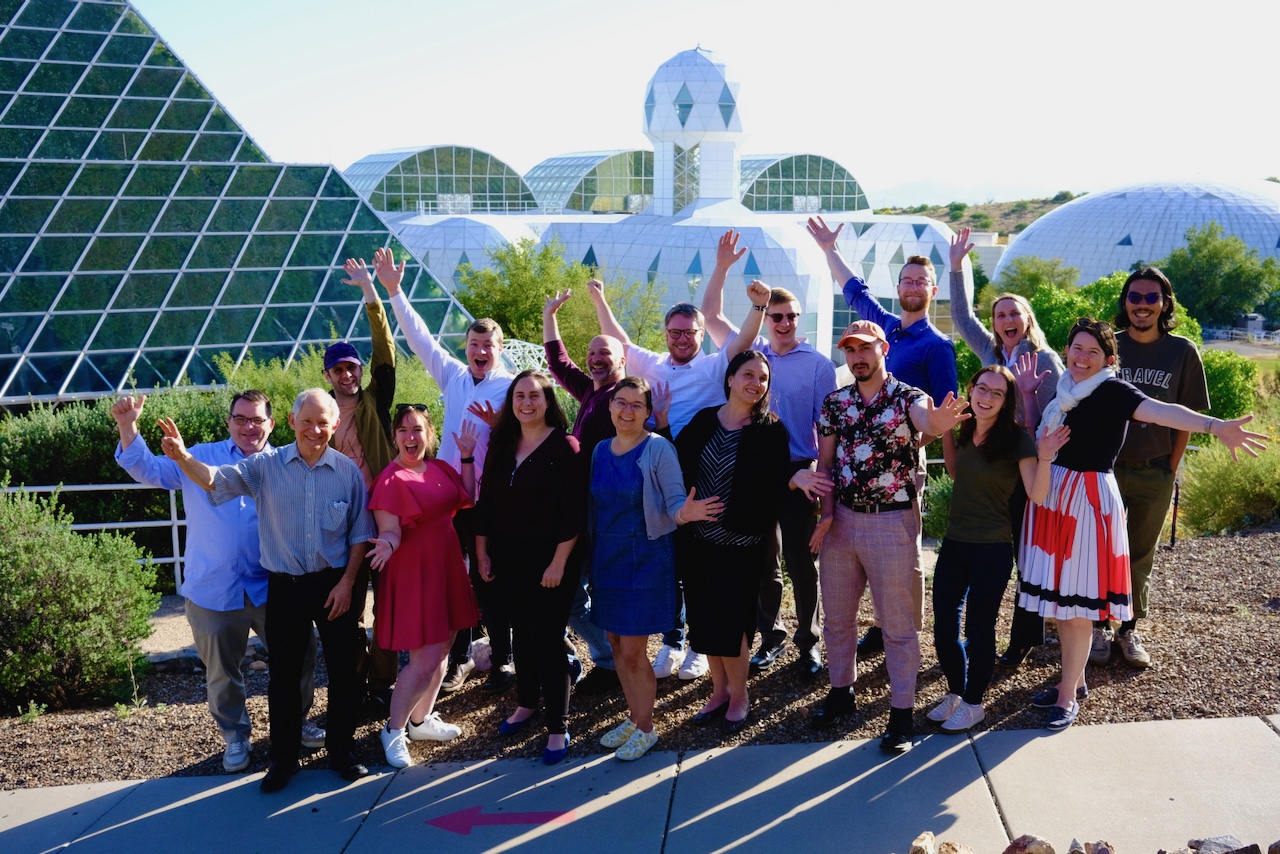
Exciting two days at Biosphere 2! We just wrapped up our first in-person the Pandora Science Team meeting. Pandora is a NASA-funded space telescope, part of the new NASA Pioneers space telescope program. This is a very exciting program: NASA challenged teams to build space telescopes that do cutting edge science – but to do this at a very rapid pace in lean projects.
Can this be done? Can we build an exoplanet space telescope that costs 0.3% of the James Webb Space Telescope? Can we design and build it ten times faster? And can we use our small but mighty telescope to answer questions about exoplanets JWST cannot?
There are few projects more exciting than designing and building a new space telescope to explore new worlds. But the few such projects that exists often takes decades of painstaking work, massive budgets, and constant struggle to keep projects on track.
NASA’s new Pioneers program seeks to change this paradigm, adopting a Silicon Valley-like approach: Form a small, energetic competitive team, set ambitious goals, and work intensively to prove your concept.
Pandora, led by exoplanet expert Elisa Quintana from Goddard Space Flight Center, is one of the first Pioneers missions.
Slightly over a year into the mission, we are getting ready for the final gate review for the mission. The gate review means that if we cannot convince the review committee that we have everything on track and under control, the mission may not go forward. Fortunately, things are going great, with few risks remaining.
With the telescope and spacecraft bus coming together nicely, our science team decided to hold an intensive in-person meeting to review all aspects of the Pandora exoplanet and host star science. With The University of Arizona playing key parts in both the exoplanet science and the mission operations, and Tucson being an overall awesome place, we decided to meet in Biosphere 2. This is an absolutely unique location: An entire complex ecosystem enclosed in steel and glass in the middle of the Sonoran desert. Biosphere 2 has an ocean, a savannah, a rain forest, and large-scale soil erosion experiments.

The site also includes a casitas with excellent accommodation for participants, and great meeting rooms. It was a unique, exciting, and futuristic location for our first science team meeting!
We heard a great overview from our colleagues at Lawrence Livermore National Lab about the progress on the telescope assembly, instrument, and spacecraft bus assembly and integration. We spent much time discussing, of course, the detector and modes of operations; and even more on how we can characterize planets and stars with Pandora’s powerful simultaneous visible and near-infrared spectrophotometric capability.

Of course, the most fun – and perhaps most heated – discussion was about targets. As powerful as Pandora is, it can only observe a small subset of the thousands of known exoplanets. Which ones to choose? Everyone had their favorites! Should we observe TRAPPIST-1? Should we observe GJ 1214b? We still have over a year to decide the final list; but at this meeting, we made much progress on discussing the many criteria that we will use to narrow down the target list and prioritize the final targets for observation.
Our Pandora team is mostly made of early career scientists, with a couple of more “experienced” scientists helping out here and there. It has been much fun to spend two intensive, fast-paced days packed with talks and discussions about how to navigate the many challenges that building and operating a novel space telescope entails. At the end of the meeting, we chilled out at Biosphere 2’s fire pit, chatting about desert animals, world-dominating AI’s, and, of course, the future of exoplanet science. And, space telescopes. It has been a fun two days – we all agreed to meet again soon, as we push the Pandora project closer and closer to launch!

